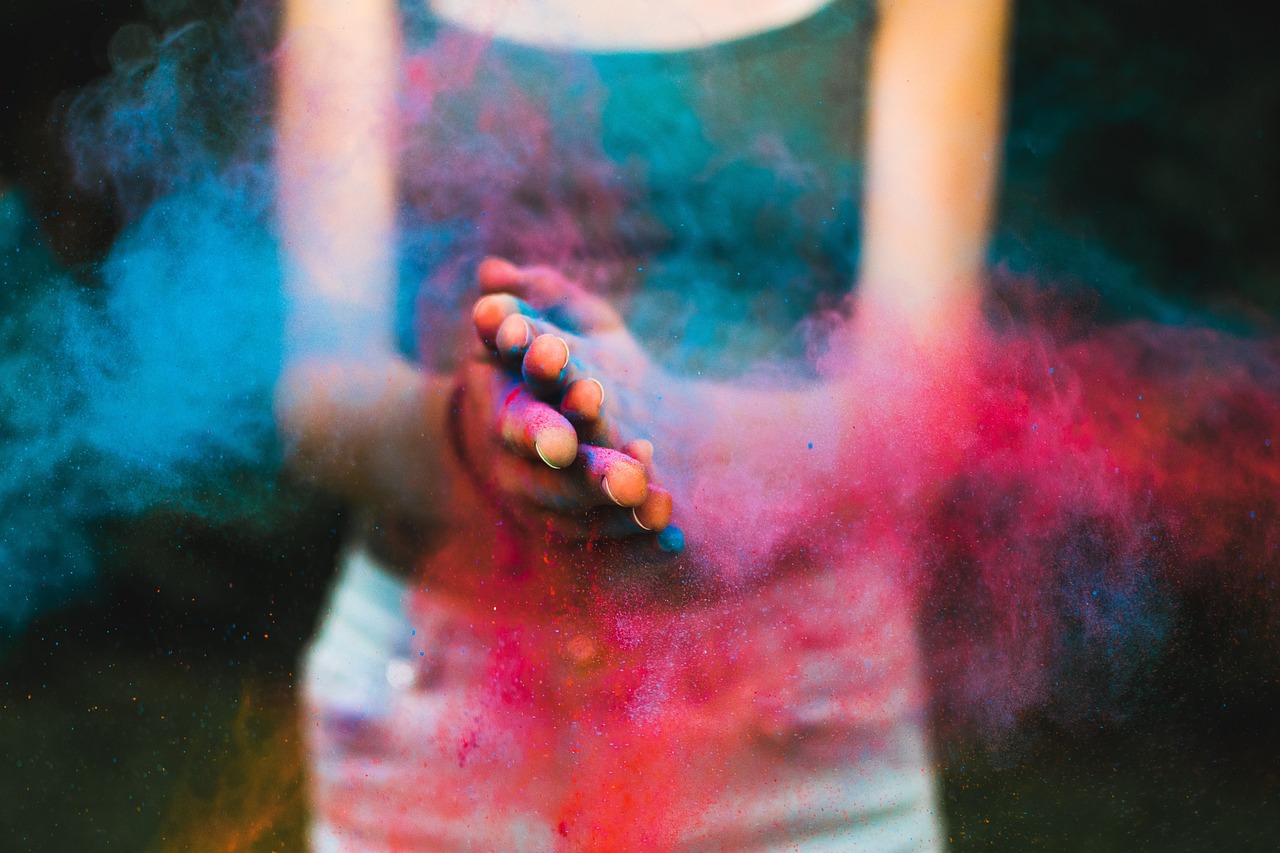Understanding the Golden Ratio in Art
The Golden Ratio is one of those concepts that seems to pop up everywhere, and for good reason! This mystical number, approximately equal to 1.618, has captivated artists, architects, and mathematicians alike for centuries. But what is it about this ratio that makes it so special? Why do we find it so visually appealing? In this article, we will dive deep into the significance of the Golden Ratio in various artistic disciplines, its historical context, and how it influences aesthetics and composition across different art forms.
Imagine walking into a gallery, your eyes scanning the walls filled with breathtaking works of art. What makes one piece stand out over another? Often, it's the underlying principles of design, and the Golden Ratio plays a crucial role in that. Artists utilize this ratio to create a sense of balance and harmony, drawing viewers into their work like a moth to a flame. The Golden Ratio isn't just a mathematical curiosity; it’s a bridge between math and art, guiding the creative process in ways that resonate on a deeply emotional level.
Throughout history, the Golden Ratio has been a guiding principle for many renowned artists. From the ancient Greeks to the masters of the Renaissance, this ratio has served as a tool for creating aesthetically pleasing compositions. So, buckle up as we explore the journey of the Golden Ratio through time, its mathematical foundations, and its impact on both historical and modern art. By the end of this article, you might just find yourself looking at art—and perhaps even the world around you—in a whole new light!
The Golden Ratio has a rich history, dating back to ancient civilizations. This section delves into its origins and how it has been perceived through the ages in art and architecture. Ancient Greeks referred to the Golden Ratio as the “Divine Proportion,” believing it represented beauty and harmony. Think of it as the secret sauce that makes everything look just right!
Understanding the mathematical principles behind the Golden Ratio is essential. This section explains its numerical properties and how it can be represented in various forms, including the Fibonacci sequence. The Golden Ratio can be expressed as the ratio of two quantities where the ratio of the larger quantity to the smaller quantity is the same as the ratio of the sum of the two quantities to the larger quantity. It’s a beautiful equation that has fascinated thinkers for centuries!
The Fibonacci sequence is closely related to the Golden Ratio. This subsection examines how artists have utilized this sequence to create harmonious compositions and visual balance in their work. The sequence starts with 0 and 1, and each subsequent number is the sum of the two preceding ones. This sequence is often found in nature, and artists have harnessed its beauty to enhance their creations.
Nature often reflects the Golden Ratio through spirals. This section discusses how artists have drawn inspiration from natural spirals to enhance the beauty and symmetry in their creations. From the shells of snails to the arrangement of leaves, the spiral is a testament to nature’s design principles, echoing the Golden Ratio in its form.
Numerous renowned artworks incorporate the Golden Ratio. Here, we analyze specific pieces, highlighting how the ratio contributes to their overall aesthetic appeal and viewer engagement. For instance, Leonardo da Vinci’s “Vitruvian Man” and Salvador Dalí’s “The Sacrament of the Last Supper” are prime examples of how the Golden Ratio can be applied to create stunning visual impact.
Modern artists continue to explore the Golden Ratio in innovative ways. This subsection discusses contemporary interpretations and applications of the ratio in various art movements. Today, artists are not just limited to traditional mediums; they are experimenting with digital art, installations, and more, all while keeping the Golden Ratio in mind to guide their creative process.
The Golden Ratio is not just visually appealing; it also affects human perception. This section explores how artworks that embody the ratio can evoke specific emotional responses in viewers. Research suggests that our brains are wired to appreciate the balance and harmony that the Golden Ratio offers, making it a powerful tool in the hands of an artist.
Research indicates that people have a natural preference for the Golden Ratio. This subsection investigates psychological studies that reveal why this ratio resonates with audiences across cultures. It appears that the Golden Ratio taps into something fundamental about human nature, making art created with this ratio universally appealing.
Beyond fine art, the Golden Ratio plays a crucial role in design. This section examines its application in graphic design, architecture, and product design, showcasing its versatility and impact on functionality. Whether it’s the layout of a website or the proportions of a building, the Golden Ratio helps create designs that are not only functional but also aesthetically pleasing.
- What is the Golden Ratio? The Golden Ratio is a mathematical ratio, approximately 1.618, that is often found in nature and is believed to produce aesthetically pleasing compositions.
- Where can I find the Golden Ratio in art? The Golden Ratio can be found in many famous artworks, including pieces by Leonardo da Vinci and Salvador Dalí, as well as in nature.
- How does the Golden Ratio affect human perception? Studies suggest that people are naturally drawn to the Golden Ratio, finding it more pleasing to the eye than other proportions.
- Is the Golden Ratio used in modern design? Yes, the Golden Ratio is frequently used in graphic design, architecture, and product design to create visually appealing and functional designs.

The Historical Context of the Golden Ratio
The Golden Ratio, often denoted by the Greek letter phi (φ), has a fascinating history that stretches back to ancient civilizations. Its allure lies not just in its mathematical properties but also in its profound impact on art, architecture, and even nature. This ratio, approximately equal to 1.618, has been revered for centuries as a symbol of beauty and harmony.
Its origins can be traced to the ancient Greeks, who first documented its significance. The mathematician Euclid, in his work "Elements," described the Golden Ratio as a division of a line into two parts such that the ratio of the whole line to the longer part is the same as the ratio of the longer part to the shorter part. This mathematical elegance captured the imagination of artists and architects alike, who began to incorporate the Golden Ratio into their creations.
In ancient Greece, the Golden Ratio was seen as a guiding principle for achieving aesthetic perfection. The Parthenon in Athens is a prime example of this; its façade and proportions exhibit the Golden Ratio, creating a sense of balance and beauty that has stood the test of time. Similarly, the works of the great Renaissance artists, including Leonardo da Vinci and Michelangelo, were heavily influenced by this ratio. They believed that the Golden Ratio could evoke a sense of harmony and order, making their artwork more appealing to the viewer.
As we move through history, we see the Golden Ratio appearing in various cultures and artistic traditions. For instance, Islamic art and architecture often reflect the principles of the Golden Ratio, utilizing intricate geometric patterns that embody this mathematical beauty. In the East, the Chinese and Indian artistic traditions also embraced the Golden Ratio, demonstrating its universal appeal across different cultures.
In the modern era, the fascination with the Golden Ratio has not waned. Artists and designers continue to explore its applications in contemporary works. From graphic design to architecture, the Golden Ratio remains a vital tool for creating visually striking compositions. It serves as a reminder that the quest for beauty is timeless, transcending cultural and historical boundaries.
To summarize, the Golden Ratio has a rich historical context that encompasses ancient civilizations, the Renaissance, and modern artistic movements. Its mathematical elegance and aesthetic appeal have made it a cornerstone in the world of art and design. As we delve deeper into its mathematical foundations and psychological impacts, we can appreciate how this simple ratio continues to influence creativity across the globe.
- What is the Golden Ratio? The Golden Ratio is a mathematical ratio approximately equal to 1.618, which is often found in nature and is used in art and design to create aesthetically pleasing compositions.
- How did the Golden Ratio influence ancient architecture? Ancient architects, particularly in Greece, used the Golden Ratio to design structures like the Parthenon, ensuring that their proportions were harmonious and visually appealing.
- Can the Golden Ratio be found in nature? Yes, the Golden Ratio appears in various natural forms, such as the arrangement of leaves, the branching of trees, and the spirals of shells.
- Is the Golden Ratio relevant in modern design? Absolutely! Designers across various fields, including graphic design and product design, utilize the Golden Ratio to create balanced and attractive visuals.

The Mathematical Foundations of the Golden Ratio
The Golden Ratio, often denoted by the Greek letter phi (φ), is a fascinating mathematical concept that has captivated artists, architects, and mathematicians for centuries. It is approximately equal to 1.6180339887, and what makes this ratio particularly intriguing is its unique properties and the way it appears in various natural and human-made structures. But what exactly is the Golden Ratio, and how does it manifest in art? Let's break it down.
At its core, the Golden Ratio is defined as a special number derived from the division of a line into two parts. If you have a line segment divided into two parts, say A (the longer part) and B (the shorter part), the ratio of the whole line (A + B) to the longer part (A) is the same as the ratio of the longer part (A) to the shorter part (B). This can be expressed mathematically as:
(A + B) / A A / B φ
This equation elegantly captures the essence of proportion that is so prevalent in nature and art. For instance, if you were to take a rectangle where the ratio of the longer side to the shorter side is the Golden Ratio, you would end up with a rectangle that is aesthetically pleasing to the human eye. This ratio can also be found in the dimensions of the Parthenon in Greece, the pyramids of Egypt, and even in the spirals of seashells and galaxies.
One of the most interesting aspects of the Golden Ratio is its relationship with the Fibonacci sequence. This sequence is formed by adding the two previous numbers to get the next one, starting with 0 and 1. The sequence looks like this:
- 0
- 1
- 1
- 2
- 3
- 5
- 8
- 13
- 21
- 34
- 55
- 89
As you progress along the Fibonacci sequence, the ratio of consecutive numbers approaches the Golden Ratio. For example, 21 divided by 13 is approximately 1.615, and 34 divided by 21 is approximately 1.619. This convergence is what makes the Fibonacci sequence so significant in understanding the Golden Ratio.
Moreover, the Golden Ratio can be visually represented through various geometric forms, including the famous Golden Rectangle and the Golden Spiral. The Golden Rectangle can be constructed by creating a square and extending one side to form a rectangle that adheres to the Golden Ratio. The Golden Spiral, on the other hand, is created by drawing arcs connecting the opposite corners of squares in a Fibonacci tiling, resulting in a spiral that is often seen in nature, such as in hurricanes and nautilus shells.
Understanding these mathematical foundations not only enriches our appreciation of art but also deepens our connection to the world around us. The Golden Ratio serves as a bridge between mathematics and aesthetics, illustrating that beauty can indeed be quantified. As we explore the intersections of math and art, we begin to see how the Golden Ratio continues to influence creative expression in profound ways.
- What is the Golden Ratio? The Golden Ratio is a mathematical ratio approximately equal to 1.618, which is aesthetically pleasing and often found in nature.
- How is the Golden Ratio related to the Fibonacci sequence? As you progress through the Fibonacci sequence, the ratio of consecutive numbers approaches the Golden Ratio.
- Where can I see the Golden Ratio in art? The Golden Ratio can be observed in various artworks, architecture, and even in nature, such as in the spirals of shells and the arrangement of leaves.

The Fibonacci Sequence and Art
The Fibonacci Sequence is not just a series of numbers; it's a magical thread that weaves through the fabric of art, nature, and mathematics. It starts with 0 and 1, and each subsequent number is the sum of the two preceding ones. So, it goes: 0, 1, 1, 2, 3, 5, 8, 13, and so forth. This sequence is intimately connected to the Golden Ratio, approximately 1.618, which emerges as the ratio of successive Fibonacci numbers. Artists have harnessed this sequence to create works that resonate deeply with viewers, evoking feelings of harmony and balance.
Now, you might be wondering, how exactly does this sequence influence art? Well, it’s all about proportions and composition. When artists use the Fibonacci Sequence, they often structure their pieces in a way that guides the viewer's eye through the artwork. This creates a sense of flow and movement, making the experience of viewing much more engaging. For instance, if you look at the famous painting, the Mona Lisa, you can see how her positioning and the background elements align with the Fibonacci Spiral, drawing the viewer's attention naturally toward her gaze.
Moreover, the Fibonacci Sequence is prevalent in various art forms, including painting, sculpture, and even photography. Artists like Leonardo da Vinci and Salvador Dalí have famously incorporated these mathematical principles into their masterpieces. For example:
- Leonardo da Vinci: His work, "The Last Supper," showcases the use of the Golden Ratio in the composition of the scene, where the placement of Christ and the apostles creates a visually appealing balance.
- Salvador Dalí: In "The Sacrament of the Last Supper," Dalí employs the Golden Ratio not only in the dimensions of the canvas but also in the arrangement of the figures, enhancing the overall aesthetic appeal.
But it doesn’t stop there! The Fibonacci Sequence can also be found in the designs of modern art and architecture. Many contemporary artists and architects use this sequence to create visually stunning works that feel naturally pleasing. The spiral shape derived from the Fibonacci Sequence can be seen in the layout of buildings, sculptures, and even graphic designs. For instance, the famous Guggenheim Museum in New York City features a spiral ramp that echoes the Fibonacci Spiral, inviting visitors to experience art in a flowing, organic manner.
In essence, the Fibonacci Sequence serves as a bridge between the mathematical and the artistic realms. It provides artists with a framework to create pieces that not only look good but also feel right. This natural alignment with human perception ensures that artworks resonate on a deeper level, making them timeless treasures that continue to inspire awe and admiration.
- What is the Fibonacci Sequence?
The Fibonacci Sequence is a series of numbers where each number is the sum of the two preceding ones, starting from 0 and 1. - How does the Fibonacci Sequence relate to the Golden Ratio?
The Golden Ratio is approximately 1.618, and it emerges from the ratio of successive Fibonacci numbers. - Can you give examples of artists who used the Fibonacci Sequence?
Yes! Artists like Leonardo da Vinci and Salvador Dalí have famously incorporated the Fibonacci Sequence into their works. - How does the Fibonacci Sequence impact viewer perception?
Artworks that embody the Fibonacci Sequence often evoke feelings of harmony and balance, making them more visually appealing to viewers.

The Spiral in Nature and Art
The spiral is one of the most captivating shapes found in both nature and art, embodying a sense of movement and growth that resonates deeply with the human experience. From the intricate patterns of a seashell to the majestic arms of a galaxy, spirals are everywhere in our natural world. This fascinating shape not only captures our attention but also serves as a fundamental principle in artistic composition. Artists have long drawn inspiration from the spiral, using it to create a sense of harmony and balance in their works.
In nature, spirals often signify growth and transformation. For instance, the nautilus shell expands in a logarithmic spiral, illustrating how living organisms can grow while maintaining structural integrity. Similarly, the arrangement of leaves around a stem, known as phyllotaxis, often follows a spiral pattern, optimizing sunlight exposure and space. This natural occurrence is not just a coincidence; it reflects the underlying mathematical principles of the Golden Ratio, which governs the proportions of these spirals.
Artists, inspired by these natural spirals, have incorporated them into their works to evoke feelings of beauty and dynamism. The Golden Spiral, derived from the Golden Ratio, is frequently used to guide the composition of a piece. For example, the famous painting "The Birth of Venus" by Sandro Botticelli employs this spiral to draw the viewer's eye towards the central figure, creating a sense of movement and flow. Similarly, the works of Leonardo da Vinci often feature spirals that enhance the narrative and emotional depth of his subjects.
To illustrate the relationship between spirals in nature and their artistic representation, consider the following table:
| Natural Spiral Example | Artistic Representation | Significance |
|---|---|---|
| Seashell | Botticelli's "The Birth of Venus" | Movement towards the center |
| Galaxy | Van Gogh's "Starry Night" | Dynamic energy and emotion |
| Hurricane | Turner's "The Slave Ship" | Chaos and nature's power |
Moreover, the spiral is not limited to visual arts alone; it also finds its way into music and literature, where it can represent the cyclical nature of life and the unfolding of stories. Just as a spiral can lead us to new heights or deeper understandings, it allows artists to convey complex ideas and emotions in a visually compelling way.
In conclusion, the spiral serves as a bridge between nature and art, embodying principles of beauty, growth, and transformation. By understanding and embracing the spiral, artists can create works that not only captivate the eye but also resonate with the deeper rhythms of life itself. As we continue to explore the interplay between these realms, we uncover a rich tapestry of inspiration that fuels creativity across generations.

Famous Artworks Utilizing the Golden Ratio
The Golden Ratio has long been a muse for artists, guiding their hands and shaping their visions. From the majestic strokes of the Renaissance to the bold lines of modern art, this mathematical marvel has found its way into countless masterpieces. But what exactly makes these works so captivating? It’s all about balance and harmony, and the Golden Ratio delivers just that.
One of the most iconic examples is Leonardo da Vinci's The Last Supper. This extraordinary mural doesn't just depict a moment in time; it embodies the essence of proportion. Da Vinci meticulously arranged the figures to align with the Golden Ratio, drawing the viewer's eye to the central figure of Christ, creating a sense of focus and depth that resonates profoundly. Each element within the painting, from the placement of the apostles to the architectural details in the background, adheres to this enchanting ratio, enhancing the overall impact of the piece.
Another masterpiece that showcases the Golden Ratio is The Birth of Venus by Sandro Botticelli. The composition is thoughtfully designed, with Venus positioned in a way that creates a harmonious balance. The spirals of the seashell and the flowing lines of her hair follow the Golden Ratio, inviting the viewer to explore the painting's beauty. This intentional placement not only captures the viewer’s attention but also evokes a sense of movement and grace, making it a timeless work of art.
Moving into the realm of modern art, we can look at Composition VIII by Wassily Kandinsky. Although abstract, Kandinsky’s work is a brilliant example of how the Golden Ratio can be applied to create visual tension and harmony. The interplay of shapes and colors is carefully structured, guiding the viewer’s eye through the canvas in a way that feels both natural and dynamic. Here, the Golden Ratio serves as a framework that allows Kandinsky to explore emotion and movement through geometry.
Even in architecture, the Golden Ratio plays a pivotal role. The Parthenon in Athens is a stunning example of this principle at work. Its façade and proportions are meticulously designed to embody the Golden Ratio, creating a sense of beauty and perfection that has stood the test of time. Visitors are often struck by the building's symmetry and balance, which can be attributed to this ancient mathematical concept.
To further illustrate the impact of the Golden Ratio in art, let's take a look at a table summarizing some famous artworks and their relationship with this captivating ratio:
| Artwork | Artist | Significance of Golden Ratio |
|---|---|---|
| The Last Supper | Leonardo da Vinci | Central focus on Christ, balanced composition |
| The Birth of Venus | Sandro Botticelli | Flowing lines and spirals enhance beauty |
| Composition VIII | Wassily Kandinsky | Dynamic shapes and colors create harmony |
| Parthenon | Unknown | Architectural symmetry and perfection |
As we can see, the Golden Ratio is not merely a mathematical concept; it's a bridge that connects the realms of art and mathematics, allowing artists to create works that resonate on a deeper level. Whether through the delicate balance of a painting or the majestic proportions of a building, the Golden Ratio continues to inspire and captivate, proving that beauty truly lies in proportion.
- What is the Golden Ratio? The Golden Ratio is a mathematical ratio, approximately equal to 1.618, often found in nature and used in art and architecture to create aesthetically pleasing compositions.
- How can I identify the Golden Ratio in artwork? Look for patterns, proportions, and placements that align with the ratio, such as the arrangement of subjects or the dimensions of the canvas.
- Are there modern artists who use the Golden Ratio? Yes! Many contemporary artists incorporate the Golden Ratio in their work, exploring its principles in innovative ways.
- Why is the Golden Ratio appealing to viewers? Research suggests that the Golden Ratio resonates with our innate sense of beauty and balance, making artworks that embody this ratio more engaging.

The Golden Ratio in Modern Art
The Golden Ratio, often symbolized by the Greek letter phi (φ), continues to captivate modern artists just as it did in the past. In today's world, where creativity knows no bounds, this mathematical marvel has found its way into various contemporary art forms, blending science with creativity in a way that resonates with both artists and audiences alike. But what exactly makes the Golden Ratio so appealing in modern art?
One of the most fascinating aspects of the Golden Ratio is its ability to create a sense of balance and harmony. Modern artists often utilize this ratio to guide their compositions, ensuring that the viewer's eye flows naturally across the canvas. For instance, artists like Pablo Picasso and Salvador Dalí have incorporated the Golden Ratio into their works, enhancing the overall aesthetic appeal. By strategically placing focal points along the lines of the Golden Ratio, they create a visual rhythm that draws the viewer in.
Moreover, the Golden Ratio isn't just limited to traditional painting; it has also influenced digital art, graphic design, and even photography. In graphic design, for example, the ratio can be applied to layout and typography, allowing designers to create visually appealing advertisements, websites, and branding materials. The harmonious proportions help to guide the viewer’s attention, making information easier to digest and more aesthetically pleasing.
In the realm of photography, the Golden Ratio can be seen in the composition of stunning images. Photographers often use the Rule of Thirds, a simplified version of the Golden Ratio, to frame their shots. By placing the subject off-center, they create a more dynamic and engaging image. But some photographers take it a step further, consciously applying the Golden Ratio to their compositions to evoke a deeper emotional response from the viewer.
Modern artists are also experimenting with the Golden Ratio in unconventional ways. For instance, installation artists and sculptors are using the ratio to create immersive environments that play with the viewer's perception of space. By designing installations that reflect the proportions of the Golden Ratio, they invite audiences to experience art in a multi-dimensional way, blurring the lines between art and architecture.
As we look to the future, the Golden Ratio continues to inspire a new generation of artists. With advancements in technology and digital tools, artists are finding innovative ways to incorporate this timeless principle into their work. Whether through augmented reality, virtual installations, or interactive art, the Golden Ratio remains a powerful tool for creating visually stunning and emotionally resonant experiences.
In conclusion, the Golden Ratio in modern art serves as a bridge between the past and the present, showcasing the enduring relevance of this mathematical concept. Its ability to create harmony, balance, and beauty is not just a relic of history; it is a living principle that continues to shape the way we perceive and create art today.
- What is the Golden Ratio? The Golden Ratio is a mathematical ratio, approximately 1.618, that is often found in nature and has been used in art and architecture for centuries to create aesthetically pleasing compositions.
- How do modern artists use the Golden Ratio? Modern artists apply the Golden Ratio in various ways, including composition, layout, and design, to create balance and harmony in their work.
- Can the Golden Ratio be found in nature? Yes, the Golden Ratio appears in many natural forms, such as the arrangement of leaves, the pattern of seeds in a sunflower, and the spirals of shells.
- Why is the Golden Ratio appealing to viewers? The Golden Ratio is believed to resonate with human perception, creating a sense of beauty and balance that is universally appreciated across cultures.

The Psychological Impact of the Golden Ratio
The Golden Ratio is more than just a mathematical concept; it holds a profound psychological impact on how we perceive beauty and harmony. Imagine walking into a room adorned with art that embodies this ratio. Instantly, you might feel a sense of calmness and balance, as if the space was designed just for you. This isn't mere coincidence—our brains are wired to respond positively to the proportions defined by the Golden Ratio. It’s like a secret language that speaks to our innate sense of aesthetics.
Research has shown that when people are presented with images that adhere to the Golden Ratio, they often rate them as more appealing compared to those that don't. This phenomenon can be likened to a universal musical note that resonates with everyone, regardless of culture or background. In fact, studies indicate that the Golden Ratio elicits a specific emotional response that can range from tranquility to admiration, making it a powerful tool in the hands of artists and designers alike.
But why does this happen? One theory suggests that the Golden Ratio mimics the patterns found in nature. Think about it: the arrangement of leaves on a stem, the spirals of shells, and even the proportions of the human body often reflect this ratio. When we encounter art or design that mirrors these natural patterns, our brains interpret them as familiar and safe, leading to a more profound emotional connection.
Moreover, the Golden Ratio can influence our perception in various domains, from visual arts to architecture. For instance, consider how a building designed with the Golden Ratio can evoke feelings of stability and elegance. This principle extends to graphic design as well. Designers often use the Golden Ratio to create layouts that are not only visually appealing but also easy to navigate. When a website or advertisement employs this ratio, users are more likely to engage with the content, enhancing their overall experience.
In a world flooded with information, the Golden Ratio serves as a beacon of clarity. It simplifies complexity and guides the viewer's eye through a composition, creating a natural flow that feels effortless. This is why many logos, advertisements, and even product designs incorporate the Golden Ratio; they tap into our subconscious preferences, making their messages more effective.
To sum it up, the psychological impact of the Golden Ratio is profound and multifaceted. It’s not just about pleasing aesthetics; it’s about how we connect with art and design on a deeper level. By understanding these psychological underpinnings, artists and designers can create works that resonate with audiences, forging connections that go beyond the visual. So, the next time you find yourself captivated by a piece of art or a design, take a moment to appreciate the Golden Ratio at play.
- What is the Golden Ratio? The Golden Ratio is a mathematical ratio, approximately 1.618, that is often found in nature and is used in art and design to create aesthetically pleasing compositions.
- How does the Golden Ratio affect our perception of beauty? The Golden Ratio aligns with natural patterns that our brains find appealing, leading to a subconscious preference for artworks and designs that embody this ratio.
- Can the Golden Ratio be applied in modern design? Absolutely! Many modern designers use the Golden Ratio to create balanced and harmonious layouts in graphic design, architecture, and product design.

Viewer Perception and Aesthetic Preference
Have you ever wondered why certain artworks captivate you while others leave you feeling indifferent? It turns out that the Golden Ratio plays a significant role in shaping our aesthetic preferences. Research suggests that humans are naturally drawn to proportions that embody this mathematical principle. This innate attraction can be traced back to our evolutionary history, where symmetry and balance often indicated health and vitality. In this sense, the Golden Ratio acts as a universal language of beauty, transcending cultural boundaries and personal tastes.
Numerous psychological studies have examined our responses to visual stimuli, revealing a fascinating connection between the Golden Ratio and viewer satisfaction. For instance, experiments have shown that images and designs that incorporate the Golden Ratio tend to be perceived as more pleasing and harmonious compared to those that do not. This phenomenon can be attributed to the way our brains process information; we tend to favor patterns that are easy to comprehend and visually appealing.
To illustrate this point, consider a simple comparison of two images: one that adheres to the Golden Ratio and another that does not. When participants were asked to rate their preferences, a significant majority favored the image aligned with the Golden Ratio. This preference can be understood through the lens of visual balance and proportion, which evoke a sense of order and tranquility in the viewer.
Why does this happen? One explanation lies in our brain's wiring. The human brain is constantly seeking patterns and familiar shapes, and the Golden Ratio offers a framework that aligns with these natural tendencies. As a result, artworks that utilize this ratio are not only aesthetically pleasing but also resonate on a deeper cognitive level.
Furthermore, the Golden Ratio is not just limited to fine art; it extends to various forms of design, including graphic design, architecture, and even product design. Designers often leverage this principle to create layouts that feel intuitive and engaging. For example, think about the layout of your favorite website or the packaging of a product you love. Chances are, the designers behind these creations have employed the Golden Ratio to enhance visual appeal and user experience.
In conclusion, the Golden Ratio serves as a powerful tool in shaping viewer perception and aesthetic preference. By understanding its influence, artists and designers can create works that not only capture attention but also evoke emotional responses. This connection between mathematics and art highlights the profound impact of proportion and balance in our visual experiences, reminding us that beauty often lies in the harmony of numbers.
Frequently Asked Questions
- What is the Golden Ratio? The Golden Ratio is a mathematical ratio, approximately 1.618, that is often found in nature and has been used in art and architecture for centuries to create aesthetically pleasing compositions.
- How does the Golden Ratio affect viewer perception? Research indicates that artworks and designs that incorporate the Golden Ratio are often perceived as more harmonious and visually appealing, leading to greater viewer satisfaction.
- Can the Golden Ratio be applied in modern design? Yes, contemporary artists and designers frequently utilize the Golden Ratio in various fields, including graphic design, architecture, and product design, to enhance functionality and aesthetics.

The Role of the Golden Ratio in Design
The Golden Ratio, often denoted by the Greek letter phi (φ), is not just a mathematical curiosity; it is a powerful tool that has shaped the realms of design across various disciplines. From graphic design to architecture, the Golden Ratio serves as a guiding principle that enhances both aesthetics and functionality. Imagine walking through a beautifully designed space where everything feels just right—this sensation often stems from the subtle application of the Golden Ratio.
In graphic design, the Golden Ratio helps create visually appealing layouts that guide the viewer's eye naturally across the page. Designers often use it to determine proportions, ensuring that elements are neither too cramped nor too sparse. For instance, a website's layout can be divided into sections that adhere to the Golden Ratio, creating a harmonious balance that keeps users engaged. This principle is not just limited to digital spaces; it also finds its way into print media, where the arrangement of text and images can significantly impact readability and overall appeal.
When it comes to architecture, the Golden Ratio has long been used to create structures that resonate with human sensibilities. Take the Parthenon in Athens, for example. Its dimensions are said to embody the Golden Ratio, resulting in a building that is not only majestic but also pleasing to the eye. Architects utilize this ratio to determine the height and width of buildings, the placement of windows, and even the proportions of individual rooms. This creates spaces that feel more comfortable and inviting, allowing occupants to thrive.
Moreover, product design has also embraced the Golden Ratio. Whether it's the sleek lines of a smartphone or the ergonomic shape of a chair, products designed with this ratio often appear more attractive and functional. Consumers are drawn to these products, sometimes subconsciously, because they evoke a sense of harmony and balance. The Golden Ratio, therefore, becomes a silent yet influential partner in the design process.
To illustrate the versatility of the Golden Ratio in design, consider the following table that outlines its applications across different fields:
| Field | Application |
|---|---|
| Graphic Design | Layout proportions, image placement, typography |
| Architecture | Structural dimensions, room proportions, facade design |
| Product Design | Shape and size optimization, user interface design |
| Fashion Design | Proportions in clothing, accessory design |
In conclusion, the Golden Ratio is not merely a mathematical concept; it is a fundamental principle that enhances the aesthetics and functionality of design across various fields. By understanding and applying this ratio, designers can create works that not only look good but also feel right to the human eye. It's as if the Golden Ratio serves as a bridge between mathematics and art, allowing us to experience beauty in a structured yet organic manner.
- What is the Golden Ratio? The Golden Ratio is a mathematical ratio, approximately 1.618, that is often found in nature and has been used in art and design for centuries to create aesthetically pleasing compositions.
- How can I apply the Golden Ratio in my designs? You can apply the Golden Ratio by using it to set the proportions of your layouts, images, and typography. Tools like grids and guides can help you achieve these proportions effectively.
- Is the Golden Ratio only relevant in art and design? While it is prominently used in art and design, the Golden Ratio also appears in nature, architecture, and even finance, showcasing its universal appeal.
- Can the Golden Ratio improve user experience in digital design? Yes, designs that adhere to the Golden Ratio often create a more intuitive user experience by guiding the viewer's eye and making content easier to navigate.
Frequently Asked Questions
- What is the Golden Ratio?
The Golden Ratio, often represented by the Greek letter phi (φ), is a mathematical ratio approximately equal to 1.618. It's a proportion that has been admired for its aesthetic appeal and is found in nature, architecture, and art.
- How did the Golden Ratio originate?
The concept of the Golden Ratio dates back to ancient civilizations, including the Egyptians and Greeks. It was used in architecture and art to create visually pleasing compositions, with famous examples like the Parthenon and works by Leonardo da Vinci.
- How does the Fibonacci sequence relate to the Golden Ratio?
The Fibonacci sequence is a series of numbers where each number is the sum of the two preceding ones. As the numbers increase, the ratio of consecutive Fibonacci numbers approaches the Golden Ratio, making it a vital tool in understanding aesthetic proportions in art.
- Can you provide examples of famous artworks that use the Golden Ratio?
Absolutely! Iconic pieces such as the "Mona Lisa" by Leonardo da Vinci and "The Last Supper" also by da Vinci, as well as "The Birth of Venus" by Botticelli, all incorporate the Golden Ratio in their composition to enhance visual harmony.
- Why is the Golden Ratio appealing to viewers?
Research suggests that the Golden Ratio resonates with human perception because it aligns with natural patterns and structures. This inherent connection to nature evokes emotional responses, making artworks that embody this ratio more engaging and aesthetically pleasing.
- How is the Golden Ratio used in modern design?
In contemporary design, the Golden Ratio influences everything from graphic design to product design and architecture. Designers use it to create layouts, logos, and spaces that feel balanced and visually appealing, thus enhancing user experience.
- Is the Golden Ratio used in nature?
Yes! The Golden Ratio appears in various natural forms, such as the arrangement of leaves, the patterns of shells, and the spirals of galaxies. Artists often draw inspiration from these natural occurrences to create harmonious and balanced artworks.
- Can anyone apply the Golden Ratio in their art?
Absolutely! While it may take some practice, anyone can use the Golden Ratio to enhance their artwork. By studying proportions and applying the ratio to compositions, artists can create pieces that resonate more deeply with viewers.



















